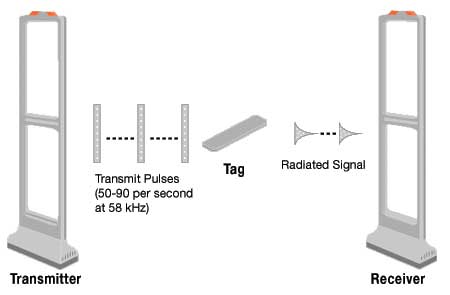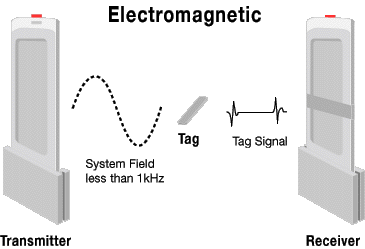Product Category
Contact Us
News
-
EAS System Cost
How Anti-shoplifting Devices Work (9) Experts say there are large differences in cost depending on the system, the size of the store and the amount of merchandise to be protected. By using state-of-the-art equipment such as digital signal processing and customized locks that can’t be released by common detachers, theft can be reduced by about 60 percent. Considering that store personnel will have more time for assisting shoppers (instead of watching for potential thieves), a reliable EAS system can pay for itself in 1 1/2 to 2 years. You may have heard news accounts a couple of years ago of research that claimed entry/exit sensors could be harmful to people wearing internal medical devices such as pacemakers and defibrillators. The U.S. Food and Drug Administration acknowledges that internal medical devices might be slightly affected by some EAS systems. However, officials there don’t consider this a public health problem. Many Americans were alarmed when the Heart Institute of St. Petersburg, Fla., released results of a two-year study of EAS systems and their possible effects on people wearing pacemakers and defibrillators. Researchers said they found that the electromagnetic fields of anti-shoplifting systems can interfere with cardiac devices if users linger in the […]
-
Source Tagging
How Anti-shoplifting Devices Work (8) As its name implies, source tagging is the embedding of disposable RF security labels at either the point of manufacture or packaging. Source tagging has been highly successful in the packaged products industry, and retailers, such as discount giant Target, are starting to use it for merchandise such as earrings, apparel, shoes, batteries, CDs, computer software, sporting goods and electronics. (Retailers’ interest in source tagging has increased as shoplifters have gotten around anti-shoplifting tags applied to the outside of packages by removing the product and leaving the empty box on the shelf!) The newest source tags are paper-thin and easily integrated into automated production processes. These tags are applied in primary packaging (or within or on the product itself — for example, incorporated into woven garment tags) and under labels on bottles. Checkpoint experts say their two-dimensional source tags can be invisibly embedded between layers of thin paper stock or cardboard on standard blister packages. These invisible tags, which are deactivated by the clerk with a verifier that needs no physical contact with the tag to work, are especially effective at addressing employee theft and represent a hot topic in retail security today. Sensormatic Products […]
-
EAS System Components
How Anti-shoplifting Devices Work (7) In addition to the all-important gates or pedestals you walk through, the most important components of EAS systems include the following: · Disposable tags — Disposable paper tags and labels are available in many different types — pressure-sensitive labels with simulated bar codes, tags or labels that can be imprinted with price, inventory, promotional or bar-code information, and tags specially designed for products such as earrings, compact discs and cosmetics, which are all items easily pocketed by shoplifters. These thin, adhesive-backed labels can be as small as a paper clip and can be easily disguised to look like standard retail tags. Most importantly, the radio frequency tags, unlike tags connected to some electromagnetic sensors, can’t be disrupted by common magnets. · Reusable tags — Probably the most familiar reusable tag is the hard, plastic tag (known as an alligator) attached to most apparel and armed with an almost impossible to defeat locking mechanism — it can also be a pain if it’s attached to the wrong part of a garment you want to try on! This off-white, pin-connected tag requires a special detacher unit to remove it. (If you’ve ever had a clerk accidentally leave one of […]
-
Acousto-magnetic System
How Anti-shoplifting Devices Work (6) The newer acousto-magnetic system, which has the ability to protect wide exits and allows for high-speed label application, uses a transmitter to create a surveillance area where tags and labels are detected. The transmitter sends a radio frequency signal (of about 58 kHz) in pulses, which energize a tag in the surveillance zone. When the pulse ends, the tag responds, emitting a single frequency signal like a tuning fork. While the transmitter is off between pulses, the tag signal is detected by a receiver. A microcomputer checks the tag signal detected by the receiver to ensure it is at the right frequency, is time-synchronized to the transmitter, at the proper level and at the correct repetition rate. If all these criteria are met, the alarm occurs. AM material is highly magnetostrictive, which means that when you put the tag material in a magnetic field, it physically shrinks. The higher the magnetic field strength the smaller the metal becomes. The metal actually shrinks about one-thousandth of an inch over its full 1.50 inch length. As a result of driving the tag with a magnetic field, the tag is physically getting smaller and larger. So if it […]
-
Electromagnetic System
How Anti-shoplifting Devices Work (5) The Electromagnetic (EM) system, which is dominant in Europe, is used by many retail chain stores, supermarkets and libraries around the world. In this technology, a magnetic, iron-containing strip with an adhesive layer is attached to the merchandise. This strip is not removed at checkout — it’s simply deactivated by a scanner that uses a specific highly intense magnetic field. (One of the advantages of the EM strip is that it can be re-activated and used at a low cost.) What most people refer to as an electromagnetic tag is actually a metal wire or ribbon that has high permeability, making it easy for magnetic signals to flow through it, according to Sensormatic’s EAS Product Co. CTO Hap Patterson. “When we drive the tag, flux is being allowed to flow through the tag until it’s saturated,” he says. “When it’s saturated, from a magnetic perspective, it begins to look like air. Saturation occurs abruptly and is an important part of the design of the tag.” Look at the figure showing the EM system with its receive coil and transmitter on either side and tag in the middle. When the tag goes from active to saturated, […]



